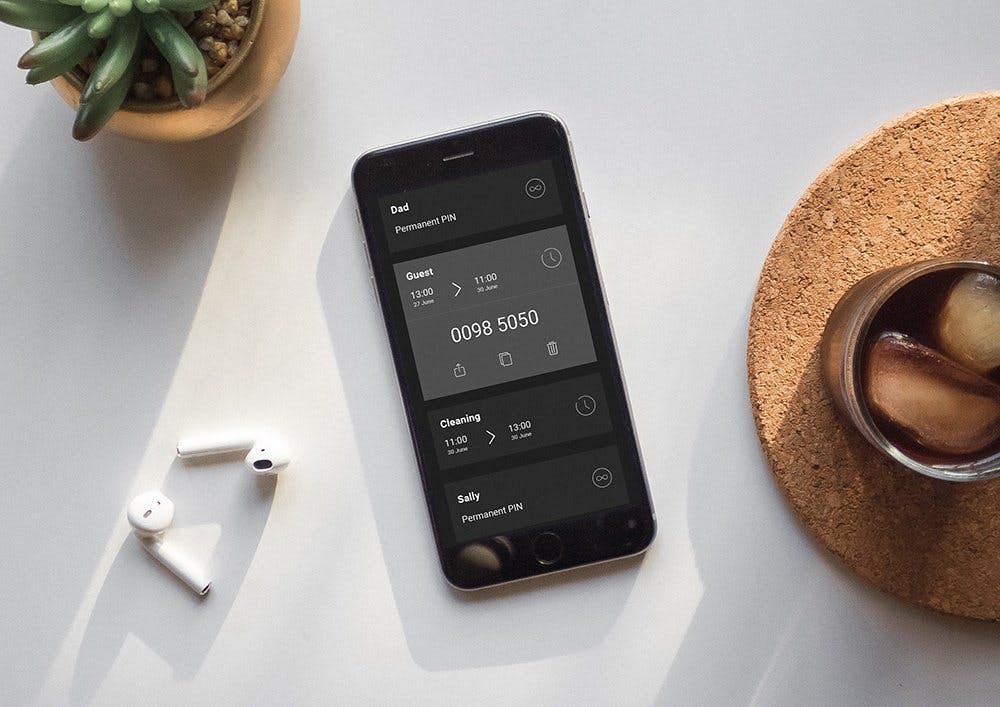A Beginner's Guide to Home Automation
By igloohome | May 28, 2018
The idea of a smart home may have been a far-fetched one decades ago. With the proliferation of new smart home tech bursting into the scene now, turning your home into a smart one has never been easier.
Wanted to get into the smart home trend but have no ideas how? Or maybe you're still wondering what a smart home is all about? This is the article for you!
What is a smart home?
Photo Credit: Advanced IT LLC
Let us break it down for you. What is a smart home? It usually refers to home automation. A smart home is equipped with network-connected products that automate and optimise functions (lights, thermostat, security etc.) remotely or by a system.
It's increasingly popular due to a number of reasons:
1. Increased convenience
Smart home-owners don't have to worry about everyday tasks since they're able to control functions in their homes remotely.
2. Lower electricity bills
The ability to switch off or turn on your appliances remotely can save you energy in the long run. Some products also learn the habits of your lifestyle and adapt to the surroundings to ensure you're not wasting money.
To get you started, here are some home automation tips for beginners:
1. Don't over complicate things
Photo credit: Stvteam
It's easy to be overwhelmed by the sheer selection of products out there. That's why it's imperative that you start simple.
Think about the tasks you do most at home - it could be adjusting the thermostat or switching on the coffee machine or more. These are the tasks you should consider automating. You may not have to limit yourself to one product, as there's likely a device or system out there to accomplish the task more efficiently.
2. Set a budget
Photo credits: Now Money
After you've sorted out the small tasks, it's time to consider a price. One product may come with many price variations, and these depend on the brand and size of the home.
Keep things affordable by automating products that are absolutely relevant to you. If they make sense and increase efficiency, they're keepers!
You could also attempt to install certain products yourself to keep costs low. The igloohome Keybox is a great example. Shackle it on a doorknob or mount it on the wall, you won't need hefty installation costs just for making key handovers a simpler task.
3. Do your research well
Home automation usually involves a network protocol. The protocol is the technology that controls your home. Think of it as the language smart devices use to communicate with one another. Choosing which 'language' is important because of the compatibilities, and of course, each comes with its pros & cons.
We've got some of these must-know protocols broken down for you:
WiFi
Photo Credit: Odyssey
The most common and widely-known is WiFi. Without the need for a Smart Hub, this option is cheaper and easier to use.
Although WiFi-enabled devices will most likely possess its own app, they can be easily integrated. Think smart speakers like Amazon Echo & Alexa - they're compatible with most smart home devices and even value-add to the user experience.
The downside though, is that WiFi-enabled products can occasionally experience interference or weak WiFi connections. It may also use up more power than other wireless options. You should also consider your home's bandwidth to avoid unnecessary lag times.
All igloohome products work offline, so even if you opt for this, your locks and lockboxes will still work. You're also able to grant remote access despite its offline capabilities. You can read about our innovative technology here.
Bluetooth
Photo Credit: PNG Mart
Another commonly used network protocol is Bluetooth. Requiring less power than that of WiFi, it only works in short ranges (approx. 1 - 2 metres). Many smart device manufacturers make use of this technology because of high-security standards and interoperability.
igloohome products work with Bluetooth too. You can issue Bluetooth keys to guests from anywhere in the world. You can read more about what you can do via Bluetooth with our locks here.
Zigbee
Photo Credit: Ada Fruit
Popular in the US, the Zigbee protocol is a type of wireless mesh network where each smart device relays a signal to speak with each other.
This protocol is great if the number of devices in your home gradually increases, as the network becomes stronger. It's fast and easy to set up, has an excellent range and allows for quick communication between products.
However, there have been some issues when it comes to interoperability. Some Zigbee-manufactured devices aren't able to communicate if they aren't from the same manufacturers. This could mean your thermostat may not be able to transmit information to your coffee machine because they're of different brands, despite working on the same protocol.
Z-Wave
Photo Credit: TechHive
Like Zigbee, Z-Wave uses a mesh network too but its devices are compatible with a wide range of products.
Z-Wave has also proven to be more energy efficient and is available in a larger variety of smart home products. While it can connect with up to 1,200 products under a roof, we doubt you'll need that many in your home. At least it provides assurance with this quantity ;)
You may still be a newbie in this field, but these rules make you a well-informed one! Start choosing which tasks you want to automate and experiment. You'll never know what new technology is out there.
Disclaimer: The views and opinions expressed in this article are those of the author and do not necessarily reflect the official policy or position of any agency of igloohome. Assumptions made in the article is not reflective of the position of any igloohome entity. If we have incorrectly used any media items belonging to anyone without the right accreditation, simply write to us at info@igloohome.co to request a takedown. Removals will be done within 24hrs of acknowledgement.
